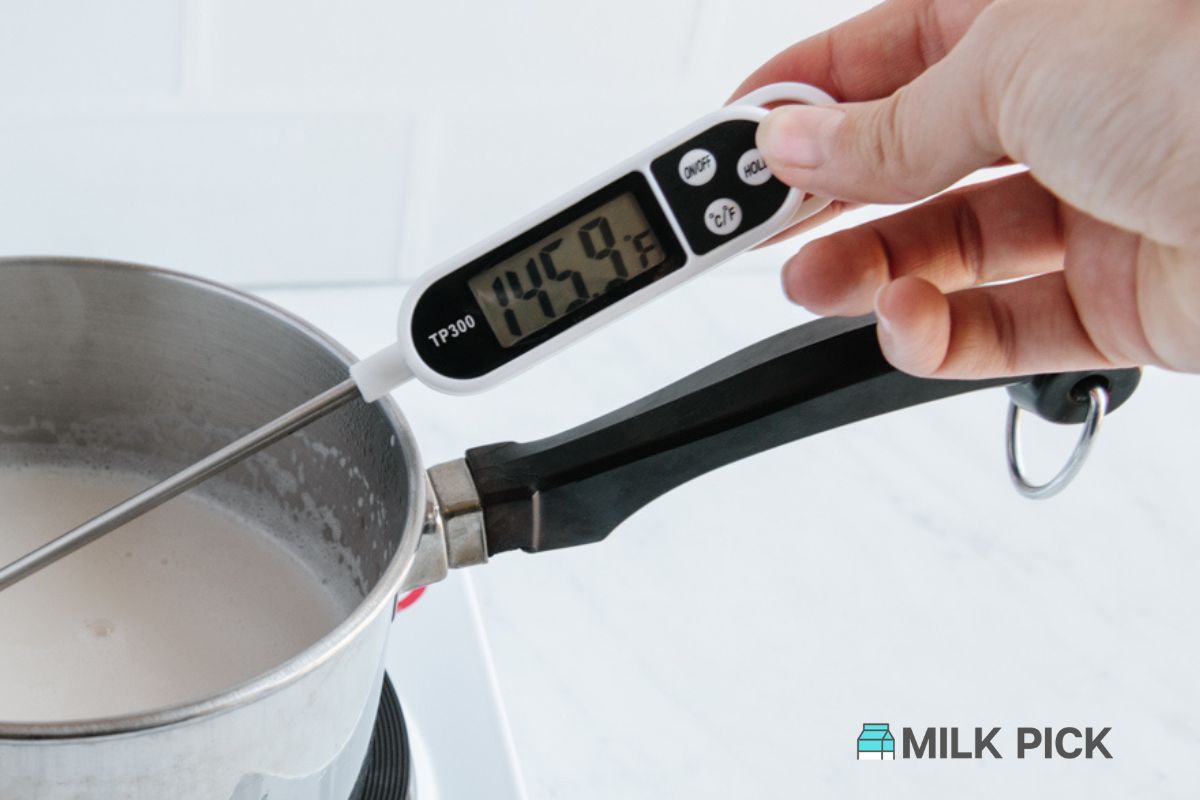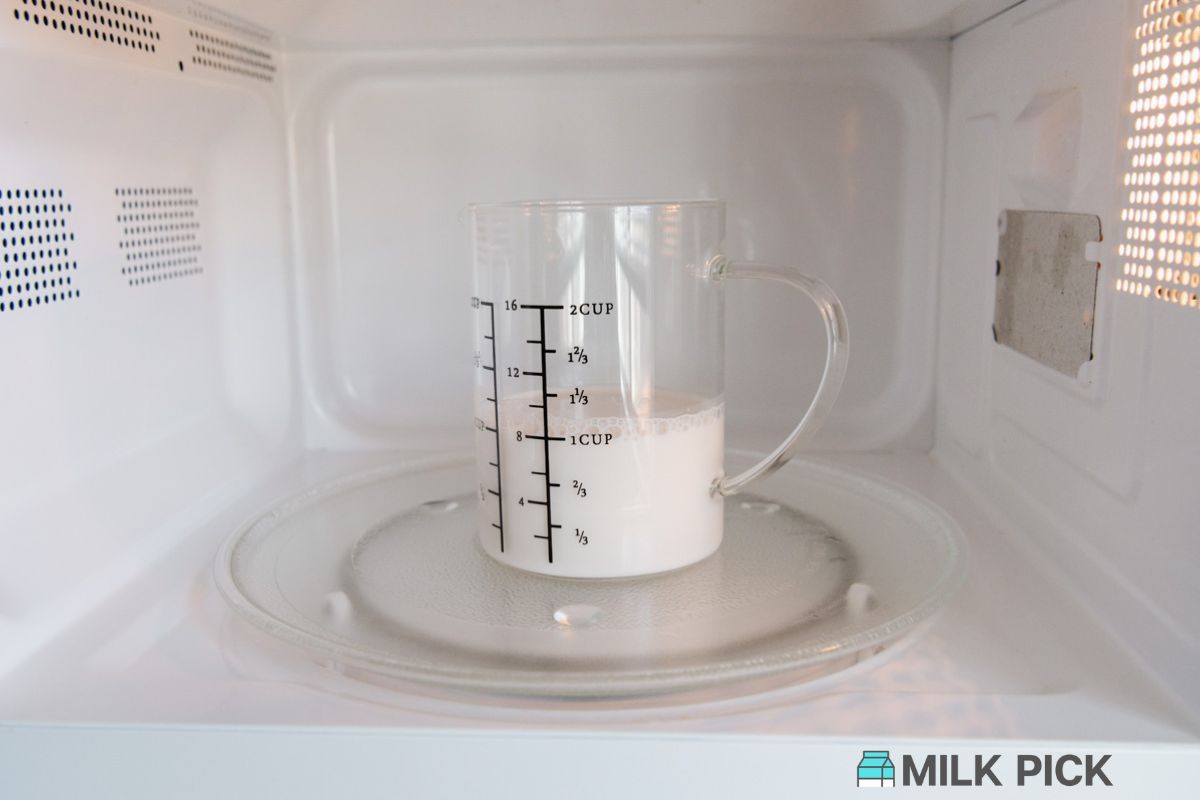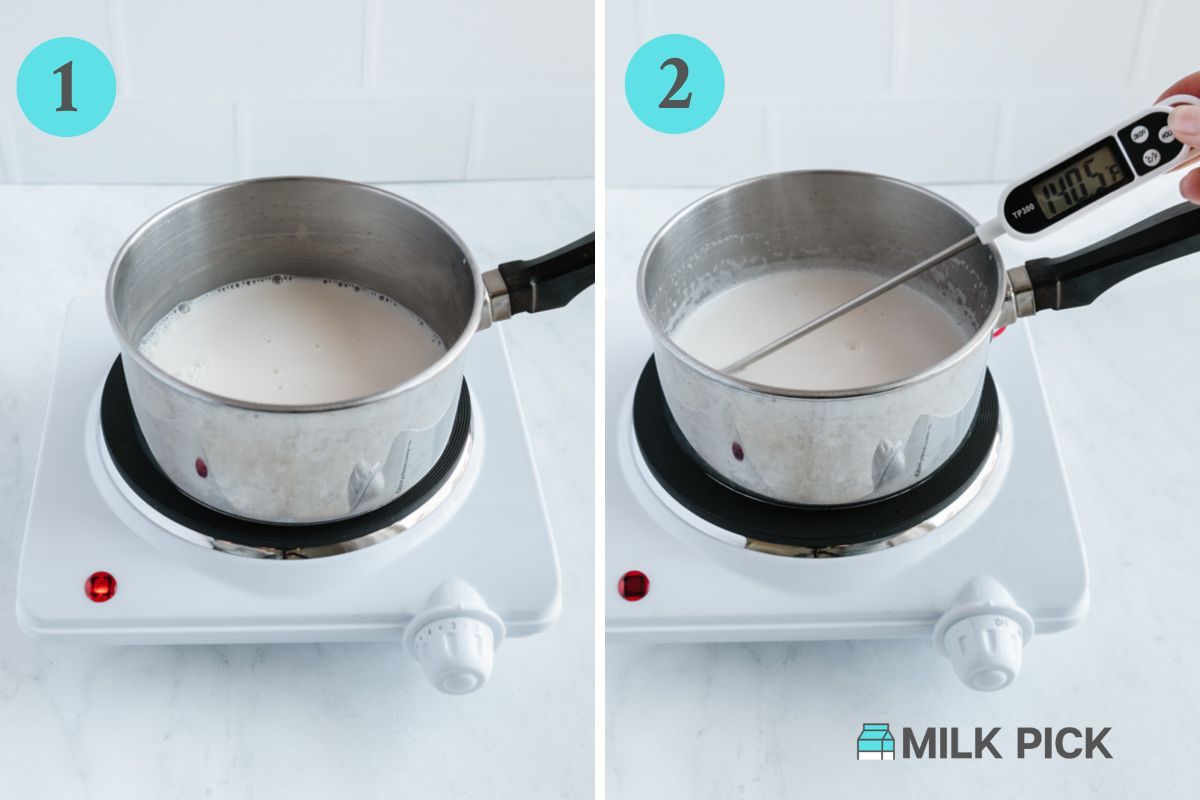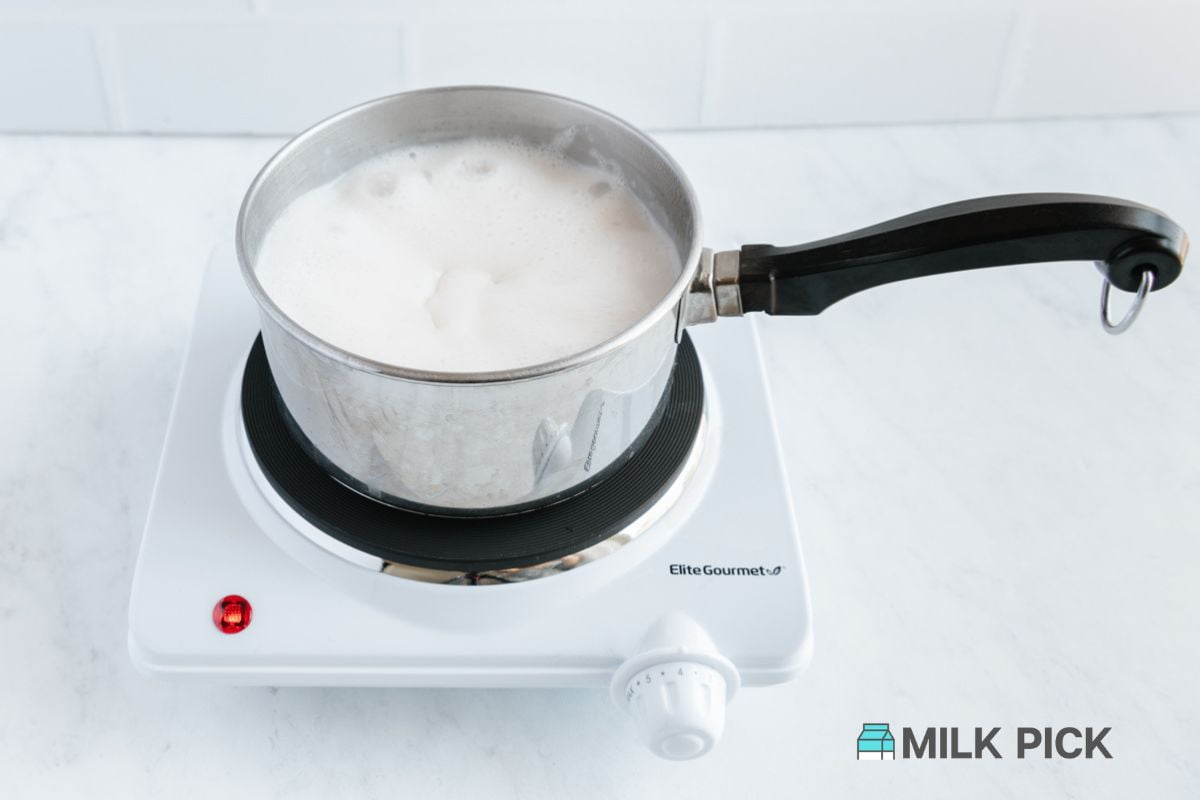Almond milk is a healthy plant-based milk that you can use in place of cow’s milk in a lot of cooking and baking recipes. In fact, almond milk is the leading milk alternative in the US right now!
Not only is almond milk packed with nutrients, but it is also convenient to buy in-store or easy to make at home. Get our plant-based milk recipe cheat sheet here!
You might be wondering if almond milk can stack up to cow’s milk in terms of warming it up. The answer is yes - with some extra care, you can absolutely heat up almond milk!
Unfortunately, almond milk is a bit sensitive and can quickly burn, resulting in a bitter flavor and all the nutrients being destroyed.
Nonetheless, there are some tricks you can use to ensure that that doesn’t happen. Read on to learn all of the tips for how to heat up almond milk perfectly every time!
Why Should You Heat Almond Milk?
You can use room temperature or cold almond milk in various ways. For example, a splash of cold almond milk can be added to drinks or even enjoyed with your favorite bowl of cereal.
However, there might be times when you want your almond milk heated. Surprisingly, warming almond milk can increase the natural flavors in the almond milk and make it sweeter and nuttier. You can drink a glass of warmed almond milk on its own or pour some into your morning cup of coffee or hot chocolate.
What is the Best Temperature for Heating Almond Milk?

The ideal temperature for warmed almond milk is slightly higher than cow’s milk. The sweet spot for almond milk is around 140°F to 150°F (60°C to 65°C). This temperature allows the almond milk to retain its nutrients but be fully warmed through.
The key to heating almond milk is to go low and slow and gradually warm the almond milk without ever letting it come to a boil and burn.
There are two main methods to heat up almond milk - in the microwave and on the stovetop.
How to Heat Almond in the Microwave

Heating almond milk in the microwave is a quick and easy process. As long as you keep an eye on it, almond milk can be heated up without losing any of its flavor or nutrients.
Pour your desired amount of almond milk into a microwave-safe glass or bowl.
Set your microwave power level to medium heat.
Microwave the almond milk in 15-20 second intervals, stirring between each blast to evenly distribute the heat. Repeat heating until you reach your desired temperature, or a thermometer reads between 140°F to 150°F (60°C to 65°C).
The almond milk should never bubble but be steamy and hot to the touch.
Is It Safe to Warm Almond Milk in the Microwave
As long as you aren’t scorching it, it is safe to microwave almond milk. That is precisely why we heat the almond milk in small bursts of 15-20 seconds and stir between blasts.
Microwaved almond milk is perfectly safe to consume and a convenient and easy method!
How to Heat Almond Milk on the Stove

For the stovetop option, you can take two routes to heat up your almond milk - directly in the pot or using a double boiler.
To heat almond milk directly in a pot:
Add the almond milk to a heavy-bottomed pot in order for the milk to cook as evenly as possible.
Over medium-low heat, warm the milk while stirring frequently.
When you see bubbles forming on the edge of the milk and the pot, remove the pot from the heat.

To heat almond milk using a double boiler:
Bring a couple of inches of water in a pot to a simmer. Then, turn the heat to medium-low.
Pour the almond milk into a heatproof metal or glass mixing bowl, and place it over the pot with water. You want the bowl to fit snugly over the pot but not touch the water below.
Stirring frequently to distribute the heat evenly, warm the almond milk until it is steamy (not boiling) and reaches 140°F to 150°F (60°C to 65°C).
Remove the pot from the heat and enjoy!
Can You Boil Almond Milk?

While you can heat up almond milk, it is not recommended to boil almond milk. Almond milk is quite sensitive and can burn quickly at higher temperatures.
After that 150°F (60°C) mark, almond milk will burn, develop an awful taste, and be stripped of its nutrients. That’s why it’s best to stick with the low and slow method for heating up almond milk to avoid ever boiling it.
Why Does Almond Milk Curdle?
Typically, almond milk doesn’t curdle on its own when heated. However, have you ever poured a splash of almond milk into your cup of coffee, and it started to separate?
This happens when cold almond milk hits hot coffee, and the acidity causes a bad reaction. Luckily, heating up your almond milk using any of these methods will reduce the likelihood of it curdling when adding it to coffee!
Tips for Heating Up Almond Milk
Whenever you go to heat up almond milk, always remember these few things, and you’ll have perfectly warmed almond milk:
- If using a microwave, pour the almond milk into a microwave-safe glass or bowl.
- Also, if using the microwave method, make sure to heat the almond milk in small bursts of 15-20 seconds and stir the almond milk in between each blast.
- If heating the almond milk on the stovetop, stir it frequently to distribute the heat evenly.
- For the stovetop method, it is also important to remove the saucepan from the heat right as you see tiny bubbles forming on the edge of the almond milk to avoid boiling and burning it.
Enjoy Perfectly Warmed Almond Milk!
If you want to enjoy a cozy cup of warmed almond milk or add heated almond milk to your coffee, you absolutely can. Remember the few tips and tricks to avoid burning the almond milk, and you’ll be good to go!
Heating Almond Milk: FAQs
Does Almond Milk Curdle When Heated?
It is possible for almond milk to curdle when you heat it up.
Usually, this will only happen if it gets really hot and starts boiling.
So as long as you are slowly heating the milk to a warm temperature and giving it a stir every now and then, you shouldn't have to worry about curdling.
Does Heating Almond Milk Destroy Its Nutrients?
Heating almond milk to a warm temperature won't destroy its nutrients.
However, if you heat it at a really high temperature or heat it for a really long time, it is possible that the almond milk will lose some nutritional value.
But if you are just warming it to a nice, drinkable temperature, don't worry! The nutrients will not go away.
Can You Heat Up Silk Almond Milk?
Just like any other almond milk, Silk is perfectly fine to heat up.
It will heat in exactly the same way as any other almond milk would, so you don't have to worry about doing anything differently.
Just put it in your microwave or stovetop, follow the heating rules, and you will be good to go!
Can You Heat up Almond Milk So It Won't Curdle?
It's pretty easy to make sure that almond milk doesn't curdle when you heat it up.
The main reason almond milk curdles when being heated is if it boils, so just make sure that you are slowly heating it up so it doesn't get to this point. It's also important to stir it while it's heating up.
If you are having a problem with curdling even when doing these steps, you may want to try a different brand of almond milk to see if that could be the issue.
Can You Boil Almond Milk for Tea and Coffee?
Heating up your almond milk for tea or coffee is one of the main reasons people will heat it up in the first place!
It's a great way to make sure that your beverage stays hot even after the almond milk is added.
However, it's suggested that you don't boil the milk, just heat it to a warm temperature similar to your tea or coffee.
Boiling the milk could result in curdling or burning, not to mention that it would get really hot.
Boiling it would probably give your almond milk a bad taste, which would then transfer to your drink.
So it's recommended that you just heat it up slowly to a nice, warm temperature that isn't too hot.
